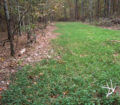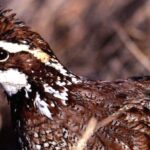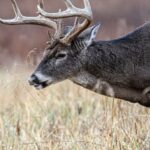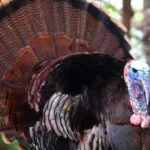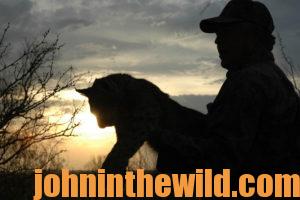 Editor’s Note: Cory VanGilder of Lamar, Missouri, studied how predators affected deer production. His research suggested that landowners and hunting clubs could use predator hunters effectively as deer-management tools, especially for trophy-deer management.
Editor’s Note: Cory VanGilder of Lamar, Missouri, studied how predators affected deer production. His research suggested that landowners and hunting clubs could use predator hunters effectively as deer-management tools, especially for trophy-deer management.
“When I first proposed this study, I really didn’t think the coyotes had very-much impact on deer populations,” Cory VanGilder says. “But my eyes were opened after our study in northeast Alabama.” He obtained a master’s degree in wildlife management from the University of Georgia. He specializes in managing land for wildlife. He says most hunters don’t realize the impact of coyotes on their deer herds, because the coyotes do the most damage during the spring of the year when you’ll find few, if any, deer hunters in the woods. In the spring, when doe deer have birthed helpless fawns, at the same time, female coyotes have tremendous needs for large quantities of food to recover from birthing their pups and to feed those pups as they begin to grow.
Although a few turkey hunters may frequent spring woods…
* those hunters will search for turkeys and not coyotes or dead fawns;
* springtime means the growth of thick foliage, especially in the East, and may cause outdoorsmen to not spot dead deer fawns;
* most female coyotes, when they kill fawns, drag the fawns back to their dens to feed the pups out of the sight of the hunter; and
* a mature coyote and several pups can devour a deer fawn carcass quickly, leaving no evidence of the kill.
VanGilder’s study revealed that because of these factors and others, there’s a definite need for more predator hunters to take more coyotes, especially in places where landowners and hunting clubs manage their deer herds for quality or trophy bucks.
How and Why VanGilder Conducted the Coyote Study
The study area for VanGilder’s research focused on 2,000 acres in deer-rich northeast Alabama. VanGilder collected his research information from trail cameras and hunter observations to estimate the ratio of fawns produced by the does on the property before the instituting of an intensive predator-removal program. The predator removal resulted in an increase in the fawn-to-doe ratio by 189%.
Before the removal of predators from the property, hunters reported the fawn-to-doe ratio as .35 does 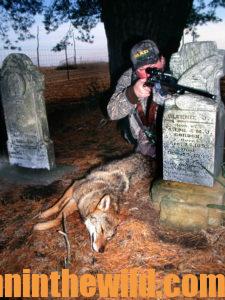 to fawns. The trail-camera survey in February, one year before using Predator hunters, reported .41 fawns to does, a low survival rate for fawns. The landowner had managed this property intensively according to quality deer-management guidelines for 10 years, one fact that contributed to the low production of fawns to does. During this 10-year period, the landowner had held a major doe harvest to reduce the deer density on the property, which normally would result in the bucks growing bigger and better. But after the doe harvest, the fawn-to-doe ratio took a nose dive.
to fawns. The trail-camera survey in February, one year before using Predator hunters, reported .41 fawns to does, a low survival rate for fawns. The landowner had managed this property intensively according to quality deer-management guidelines for 10 years, one fact that contributed to the low production of fawns to does. During this 10-year period, the landowner had held a major doe harvest to reduce the deer density on the property, which normally would result in the bucks growing bigger and better. But after the doe harvest, the fawn-to-doe ratio took a nose dive.
“We speculated that the reason for this drastic drop in fawn-to-doe production was the result of having a high deer density and a high coyote-predator density on the property,” VanGilder explains. “When the landowner reduced the number of deer on the property, he still had a high number of predators, primarily coyotes and bobcats, which were taking as many fawns as they had been taking when the deer numbers were higher. When the doe population was reduced, the impact of the predators was magnified.”
When numbers of does dropped fawns each spring, the coyotes on the property had plenty of fawns to eat. Yet, a good number of the fawns survived. But after the removal of many does, each spring saw fewer fawns but the same number of coyotes. The coyotes ate the same number of fawns, causing the doe-to-fawn ratio (the number of fawns that survive after birth) to drop drastically. Although the main predators were coyotes and bobcats, in this region, a black bear also wandered through the study area toward the end of the study.
“After the predators were removed, the doe-to-fawn ratio went up to 1.2 does to fawns produced per doe,” reports VanGilder. “On the camera survey, the doe-to-fawn ratio increased to 1.1, indicating that after the removal of the predators, each doe produced at least one fawn per year with some does producing two fawns per year.”
From studying the scat collected from woods roads on the property, VanGilder and his team of scientists named the coyote as the number-one predator on the fawns that caused the decline of the deer herd with some bobcat predation. “We found very-little deer hair at all in the bobcat’s scat,” mentions VanGilder.
How the Predators Were Removed:
To remove the predators from the study area, the landowner hired a professional predator group of trappers. With a scientific collecting permit, these hired trappers trapped the property for predators after trapping season. In 6 months, they removed 22 coyotes and 10 bobcats from the 2,000-acre study area, a tremendous number of predators on that small study site. “Coyotes can replenish a region, like in the study area where we conducted our research, really fast,” VanGilder comments. “especially now with so-many transient coyotes in this part of Alabama, and not-much empty space where there aren’t any coyotes. Our study was conducted from February through July one year. The fawning period in the study site was in August. We wanted to time our trapping to just before the fawns were born, so that our trapping program would have the greatest positive impact on fawn production.”
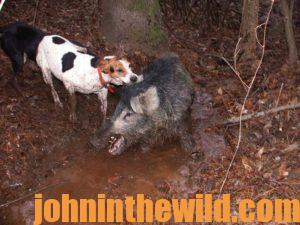 The landowner continued the trapping program and also asked his hunters to take coyotes on sight. When VanGilder returned 1-year later and did a camera survey of the property, the young bucks born after the implementation of the predator-removal program showed-up in the camera survey, revealing a large new crop of 1-1/2-year-old bucks and does on the property, after the removal of the predators and the continuation of the predator-removal program. “Our study had a positive impact on deer production on the property where we removed the predators,” reports VanGilder.
The landowner continued the trapping program and also asked his hunters to take coyotes on sight. When VanGilder returned 1-year later and did a camera survey of the property, the young bucks born after the implementation of the predator-removal program showed-up in the camera survey, revealing a large new crop of 1-1/2-year-old bucks and does on the property, after the removal of the predators and the continuation of the predator-removal program. “Our study had a positive impact on deer production on the property where we removed the predators,” reports VanGilder.
How Coyotes Can Sometimes Benefit Deer Herds:
VanGilder quickly reports, however, that in some places where hunters don’t take enough deer to keep the buck-to-doe ratio in balance, the coyotes and the bobcats can have a positive effect on the deer herd by helping to insure that the herd’s numbers remain low.
“In urban areas, where hunters aren’t permitted to help control deer population, the coyote may very well be an effective predator to help keep deer numbers low,” VanGilder mentions. “But, in regions where hunters try to intensively manage deer for hunting, predator removal can help to keep the deer herd balanced, especially after an antlerless (doe) harvest.”
In areas of an overpopulated deer herd where hunters don’t remove enough does to reduce and control herd growth, the coyote may act as a positive management tool. However, in places with a deer herd overpopulated with does, landowners need to employ the management tool of harvesting a prescribed number of does to get the deer herd back in balance with close to a one or a two doe-per-buck ratio. While removing the overabundance of does, you also must consider removing a large number of predators, or else you negatively may impact the fawn production on that property.
You need to remove predators before the deer drop their fawns, because a deer fawn killed by a coyote 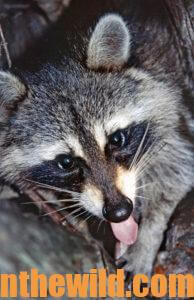 and dragged back to its den can feed many-more pups than a mouse or a songbird will – probably the reason deer fawns become one of the coyotes’ primary targets during the fawning season, which often coincides with the coyotes’ pup-rearing season. In most sections of the country, the deer fawn in the spring. However, in some parts of Alabama and other southern states, the deer may fawn as late as August. “The coyotes prey heavily on deer fawns during the spring because in most places the female coyote has just had her pups, which is a very-stressful time for her,” VanGilder emphasizes. “She needs more nutrition for herself and has to provide food for her pups, until they’re mature enough to hunt on their own. Therefore, killing, eating and feeding deer fawns to the coyote pups is one of the most-efficient ways for the female coyote to quickly rebuild her nutrition level and her health and provide big meals for growing pups.”
and dragged back to its den can feed many-more pups than a mouse or a songbird will – probably the reason deer fawns become one of the coyotes’ primary targets during the fawning season, which often coincides with the coyotes’ pup-rearing season. In most sections of the country, the deer fawn in the spring. However, in some parts of Alabama and other southern states, the deer may fawn as late as August. “The coyotes prey heavily on deer fawns during the spring because in most places the female coyote has just had her pups, which is a very-stressful time for her,” VanGilder emphasizes. “She needs more nutrition for herself and has to provide food for her pups, until they’re mature enough to hunt on their own. Therefore, killing, eating and feeding deer fawns to the coyote pups is one of the most-efficient ways for the female coyote to quickly rebuild her nutrition level and her health and provide big meals for growing pups.”
How the Predator Hunter Can Be an Effective Deer-Management Tool:
From VanGilder’s research, we can learn how the efficient predator hunter can become an integral part of a trophy deer-management program. Both quality and trophy-deer management generally occur when landowners keep deer densities in balance by removing a certain percentage of the unantlered segment of the herd each year. The fewer does on the property, the fewer fawns reproduced, meaning the coyotes will have a smaller amount of fawns to eat and therefore will feed even more heavily on the newborn fawns. In wildlife management, rarely can you manage one species of animal without affecting other species dependent on that animal for food. A landowner who wants to raise quality or trophy deer needs to consider an intensive predator-removal program as a part of his deer-management program, since his hunters must harvest a prescribed number of does each season to keep the deer herd in balance.
“To have an impact on the coyote population, a large number of coyotes have to be removed and continue to be removed each year, rather than just a random few coyotes taken during hunting season,” VanGilder emphasizes. “In many regions where there are no coyotes, the bobcat is usually the primary predator on deer. However, when coyotes move into an area, the bobcat generally will change his diet and start eating other animals to prevent having to compete with the coyotes for the deer fawns. The 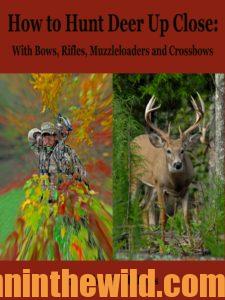 bobcat usually will eat more birds and small mammals, instead of deer fawns, when the coyote moves into his territory.” From VanGilder’s study, we’ve learned that the predator hunter can be a deer manager’s best friend. The predator hunter may help control the number of coyotes and other predators eating deer fawns in the spring and impacting the landowner’s deer herd.
bobcat usually will eat more birds and small mammals, instead of deer fawns, when the coyote moves into his territory.” From VanGilder’s study, we’ve learned that the predator hunter can be a deer manager’s best friend. The predator hunter may help control the number of coyotes and other predators eating deer fawns in the spring and impacting the landowner’s deer herd.
To learn more about deer hunting, check out John E. Phillips’ book, “How to Hunt Deer Up Close with Bows, Rifles, Muzzleloaders and Crossbows,” available in Kindle, print and Audible versions at http://amzn.to/11dJRu8
Tomorrow: Why to Fertilize Your Deer


